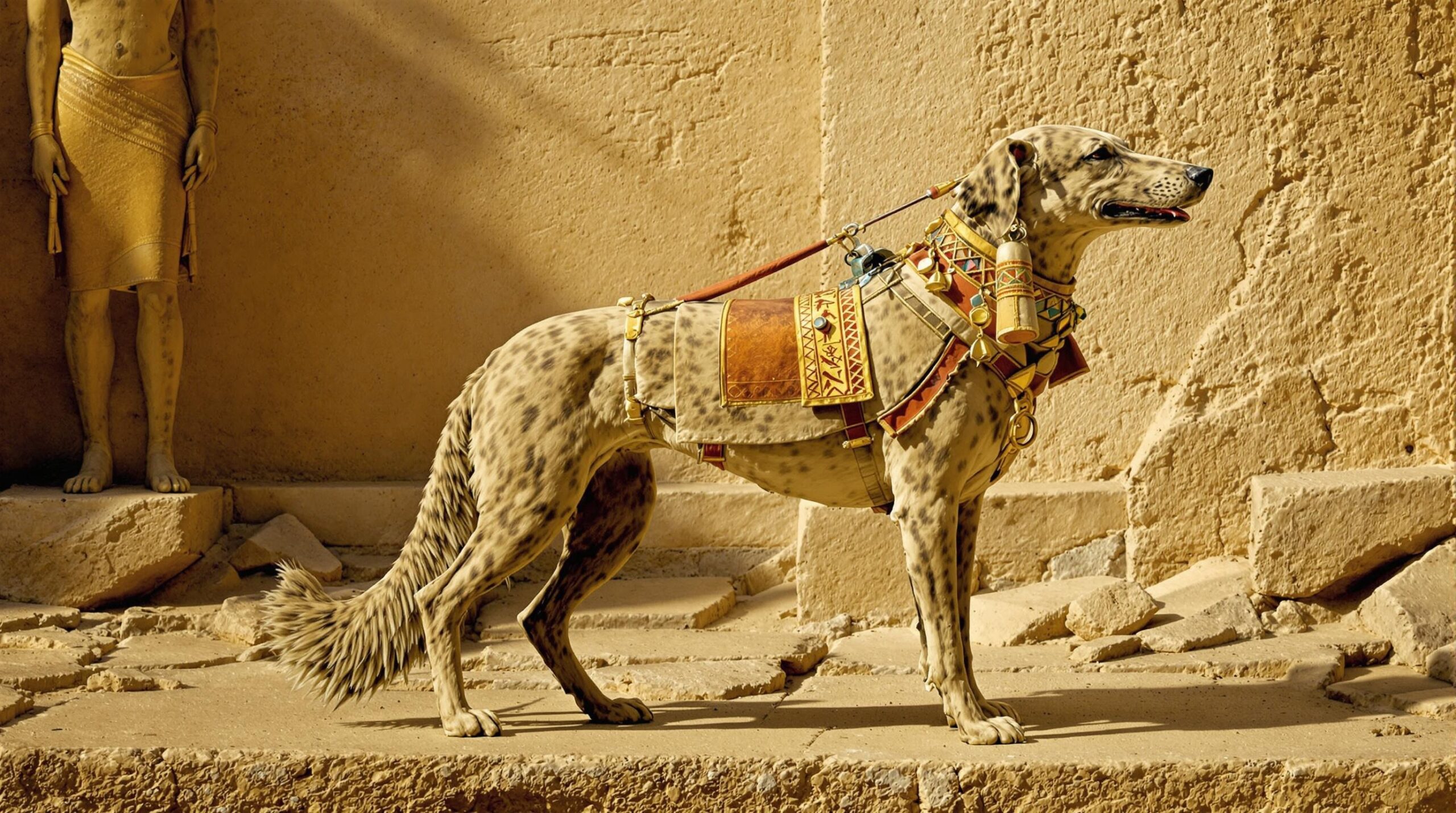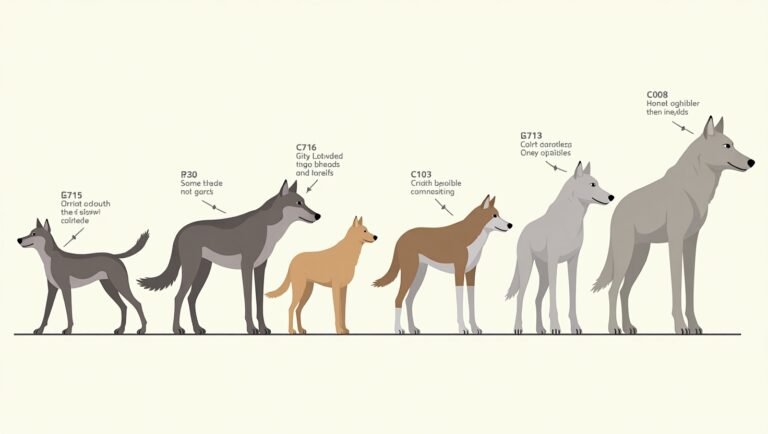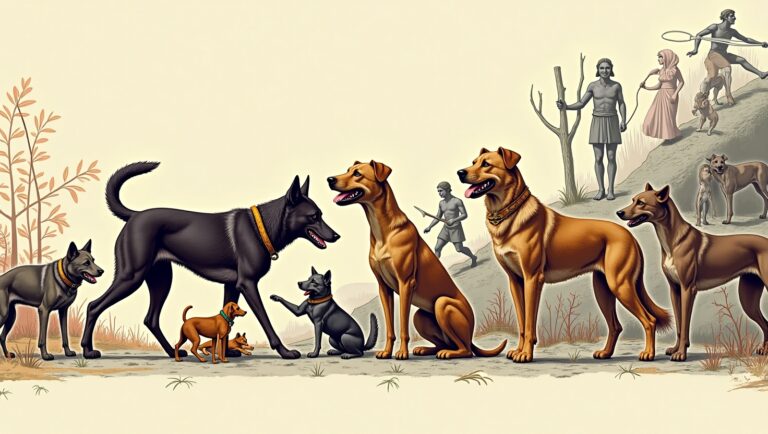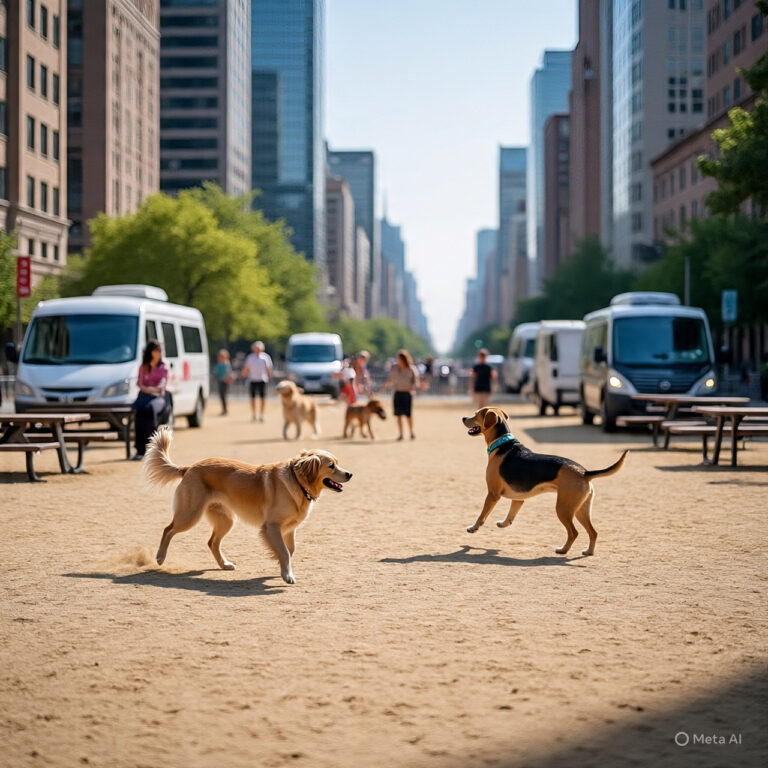Dogs in Ancient Civilizations: Guardians, Companions, and Sacred Symbols

Dogs have accompanied humanity for over 15,000 years, evolving from wild wolves into deeply integrated members of ancient societies. Across Mesopotamia, Egypt, Rome, China, Mesoamerica, and other civilizations, dogs served not only as hunting companions or guard dogs, but also as spiritual guides, mythological deities, and status symbols. This article explores the complex and diverse roles of dogs in ancient civilizations, supported by archaeological evidence, mythological references, and cultural practices.
The Evolution of Dog Domestication in Human History
Domestication of Canis lupus familiaris is believed to have begun during the Late Pleistocene, between 15,000 and 30,000 years ago. Archaeological discoveries in regions like Siberia and Germany have revealed early dog remains buried with humans, indicating emotional and practical bonds. Genetic studies suggest that dogs were domesticated from gray wolves, with early human societies selectively breeding them for hunting, herding, and guarding roles.
Dogs in Ancient Mesopotamia: Guardians and Sacred Companions
In Mesopotamian culture, dogs were seen as both protective spirits and loyal companions. Cuneiform tablets from the Sumerians and Akkadians include references to hunting dogs, while statues and amulets depict dogs warding off evil.
- Gula, the goddess of healing, was often accompanied by a dog, symbolizing medicine and recovery.
- Excavations in Ur and Nippur unearthed dog skeletons buried alongside humans, indicating their spiritual role in the afterlife.
- Assyrian bas-reliefs show mastiff-like dogs used in military contexts.
Sacred Symbolism of Dogs in Ancient Egypt
Ancient Egyptians revered dogs for their loyalty and protective instincts. Most notably, the god Anubis, depicted with a jackal or dog’s head, was the guardian of the dead and protector of tombs.
- Mummification of dogs was a common practice. Over 8 million mummified dogs were found in catacombs at Saqqara.
- Dog names have been discovered in hieroglyphics, including names like “Brave One” and “Reliable.”
- Dogs often appear in funerary art and statuary, serving as guardians for the deceased in the afterlife.
Canines in the Indus Valley Civilization
Although evidence from the Indus Valley Civilization is limited, pottery shards, figurines, and burial sites suggest the presence of domesticated animals, including dogs.
- At Mohenjo-Daro, researchers found dog bones near human remains, possibly indicating shared living or ritual significance.
- The absence of rich iconography compared to Egypt or Mesopotamia suggests dogs were more practical companions than spiritual figures.
Reverence for Dogs in Ancient Persia
In Zoroastrianism, dogs were held in high regard as spiritually pure animals. Texts from the Avesta (the Zoroastrian holy book) mention dogs over 300 times.
- Dogs were believed to protect the soul for three nights after death.
- Killing a dog was considered a serious crime, equal to murder, under Persian law.
- Dogs served as household guardians, herders, and funeral escorts.
Dogs and the Dead in Ancient China
Dogs held multifaceted roles in ancient Chinese dynasties, from the Shang to the Zhou.
- Archaeological sites reveal dog burials in human tombs, sometimes as sacrificial offerings.
- Dogs were used for protection, hunting, and ritual ceremonies.
- Some tombs included ceramic statues of dogs, possibly to protect the deceased in the afterlife.
Canine Myths and Warfare in Ancient Greece
Dogs were prominently featured in Greek mythology and daily life.
- The mythical Cerberus, a three-headed dog, guarded the gates of Hades.
- Dogs accompanied hunters, especially in depictions of the Artemis cult.
- In Homer’s Odyssey, Argos, Odysseus’s dog, recognizes his master after 20 years, symbolizing loyalty.
Roman Dogs: From Mosaics to Military
In ancient Rome, dogs were associated with both domestic life and military prowess.
- Mosaic floors in villas show inscriptions like “Cave Canem” (Beware of Dog).
- Romans developed breeds like the Molossian hound, used in war and security.
- Dogs were also used in entertainment, including gladiator-style animal fights.
Canines in Mesoamerican Civilizations
The Aztecs and Maya integrated dogs deeply into their spiritual beliefs and ritual life.
- The Aztec god Xolotl, often depicted as a dog, guided souls through the underworld.
- Xoloitzcuintli, a hairless dog breed, was believed to assist in the soul’s journey after death.
- Dogs were sometimes buried with humans or sacrificed during rituals.
Dogs Among the Celts and Germanic Tribes
In Iron Age Europe, dogs had both spiritual and utilitarian roles.
- Dogs appear in Celtic burial mounds, buried with warriors or chieftains.
- Druidic rituals may have included dogs as sacred protectors or omens.
- Germanic tribes used dogs for herding, hunting, and defensive purposes.
Dog Iconography in Ancient Art and Literature
Dogs are frequently depicted in ancient art, offering insights into their roles and appearances.
- Mosaics, bas-reliefs, pottery, and hieroglyphics show various breeds and sizes.
- In Roman villas, dogs were often portrayed as watchful guardians or loyal pets.
- Sanskrit texts, Greek epics, and Persian scriptures all reference dogs in symbolic or literal contexts.
Dogs as Functional Members of Ancient Societies
Dogs performed vital tasks that benefited ancient communities:
- Guard Dogs: Used to protect homes and livestock.
- Hunting Dogs: Trained to assist in game tracking.
- War Dogs: Employed in battle, especially in Rome, Persia, and Assyria.
- Spiritual Guides: Used in death rituals or as symbolic guardians.
Archaeological Discoveries of Early Dogs
Evidence of early dog use includes:
- Fossil remains showing human-dog burials, such as the Bonn-Oberkassel burial (~14,000 years ago).
- Dog skeletons with worn teeth, suggesting roles in chewing leather or guarding.
- Footprints of dogs beside humans in ancient dwellings indicate cohabitation.
Genetics and Ancient Dog Breeds
Recent genetic studies trace distinct lineages of ancient dogs:
- DNA evidence shows that East Asian, Middle Eastern, and European dogs developed unique traits.
- Breeds like the Basenji, Saluki, and Xoloitzcuintli are considered ancient.
- Physical adaptations varied: short-haired dogs in deserts vs. thick-coated dogs in colder regions.
Legal and Religious Views on Dogs
- Ancient Egyptian and Persian laws protected dogs.
- Hebrew texts and early Islamic traditions had ambivalent attitudes, sometimes limiting contact with dogs.
- Zoroastrianism considered harming dogs as a grave sin.
Dogs in Ancient Literature
Canine references appear in:
- Homer’s Odyssey: Argos waits 20 years for Odysseus.
- Mahabharata: Yudhishthira refuses heaven without his dog, symbolizing dharma.
- Avestan texts: Dogs are sacred beings with protective and purifying powers.
Social Class and Dog Ownership
- In Rome, aristocrats owned exotic breeds; slaves used dogs for labor.
- In China, imperial families had toy breeds while peasants kept guard or hunting dogs.
- Dog ownership often reflected social status, especially in urban societies.
Regional Differences in Canine Roles
- Eastern cultures often integrated dogs into spiritual and burial practices.
- Western cultures emphasized dogs in hunting, warfare, and mythology.
- Environment shaped use: Nomadic tribes relied on herding dogs; agricultural societies used guard dogs.
The Decline and Transformation of Ancient Canine Roles
Post-antiquity, dogs faced changing roles:
- The rise of Christianity and Islam influenced how dogs were perceived—sometimes as impure.
- Dog use shifted from spiritual and military to domestic and agricultural.
- New breeds emerged from cross-breeding ancient bloodlines.
Lessons from Ancient Canine-Human Bonds
Ancient civilizations reveal how dogs:
- Played critical functional roles in survival and security.
- Were symbolically tied to themes of death, loyalty, and guardianship.
- Left a genetic and cultural legacy that continues today.
Conclusion: Preserving the Legacy of Ancient Dogs
From the guardians of tombs in Egypt to underworld guides in Mesoamerica, dogs in ancient civilizations held diverse and profound roles. Their presence in rituals, art, warfare, and daily life reflects a timeless partnership between human and canine. Modern breeds and behaviors echo these ancient relationships, urging us to study, honor, and preserve their historical significance.





